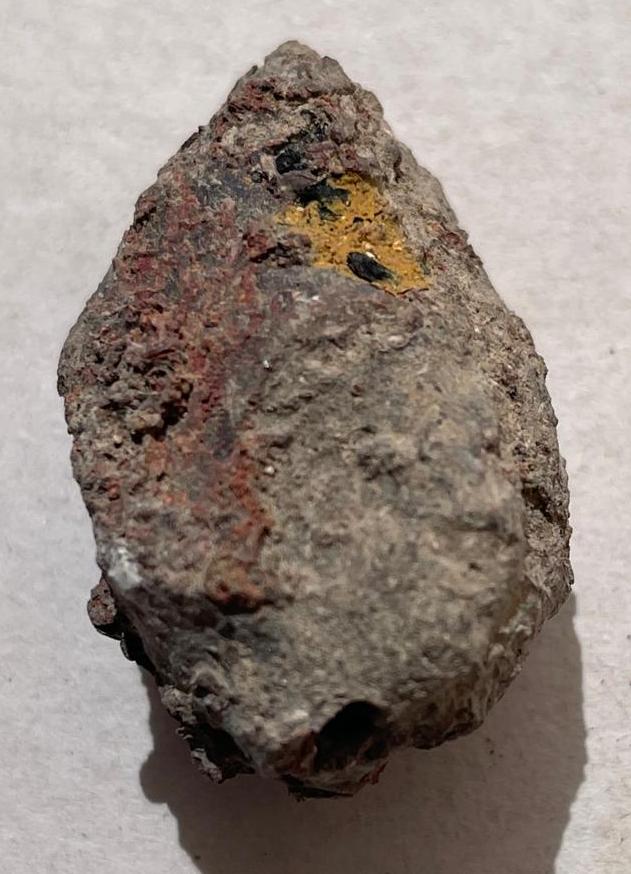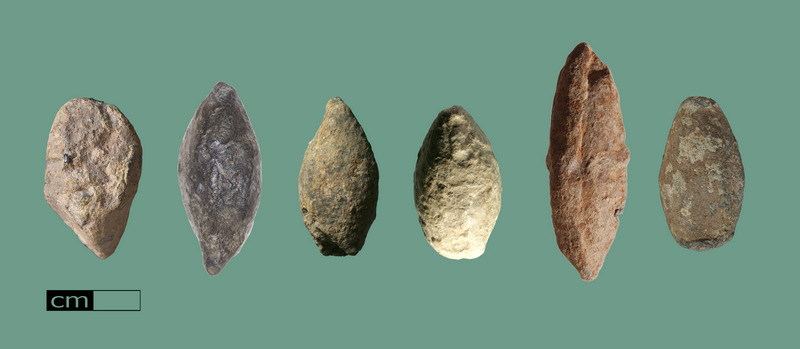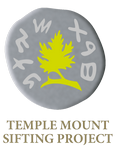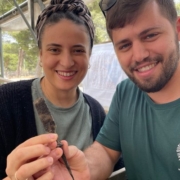Find and Finder of the Month: Adam Cohen found a Hellenistic Lead Sling Bullet
Everyone knows that David fell Goliath with a pinpointed pebble stone from a sling. But did you know that sling bullets were still commonly in use a thousand years later? During the summer season, Adam Cohen from Jerusalem uncovered what may be the eighth lead sling bullet identified by the Temple Mount Sifting Project. These small but deadly projectiles open a fascinating window into ancient warfare and the turbulent history of Jerusalem.

Lead sling bullets, known in Latin as glandes plumbeae (“lead acorns”), were used by Greek and Roman armies from the fifth century BCE onward. Unlike stones, lead bullets were smaller and denser, giving them greater range and penetration. Their aerodynamic shape, often almond-like or flattened like a peach kernel (or if you will, the shape of a modern day football), and their grey color made them difficult to see in flight. Many were decorated or inscribed with symbols or short messages, turning them into tools of psychological warfare as well as physical weapons.

Designs sometimes bear traces of figures that are now unclear due to corrosion. Figures normally depicted on such items include a thunderbolt with wings, the symbol of Zeus, a scorpion, and a trident. These motifs were widely recognized symbols of power and danger in the Hellenistic world. Occasionally, bullets carried Greek inscriptions such as “Victory” or the names of commanders.
So far, most sling bullets discovered in Israel date to the Hellenistic period, with fewer examples from the Roman era. This pattern likely reflects the intensity of the Seleucid-Hasmonean conflicts in the second century BCE, which involved fortified cities and guerrilla warfare—ideal conditions for slingers. In contrast, Roman military tactics relied more on heavy infantry and siege engines, making slingers less prominent in Judea after the first century BCE.
The presence of sling bullets on the Temple Mount suggests military activity on or near the Temple Mount during the Hellenistic period, possibly linked to the Seleucid fortress known as the Acra or later conflicts. The Acra was a thorn in the side of the Hamoneans even after the liberation and purification of the temple. It was only during the battles of Simon the Maccabee who finally managed to overtake the Acra in the year 141 BCE.
Adam Cohen is a student in the sixth grade at the “Tali Gilo” elementary school. He explains that when he first saw the sling bullet he thought it was just a regular stone, but because of its shear heaviness he handed it to his mother to help him inspect. He goes on to say that because of his find, his class is now more interested in archaeology and history. This of course is one of the important aspects of our sifting project, and fills us with tremendous hope and pride.
Lead sling bullets are more than weapons; they are messages from the past. Each one tells a story of power struggles, cultural symbols, and the resilience of ancient communities. Adam Cohen’s recent find adds to this growing dataset, helping us reconstruct the story of ancient Jerusalem—one bullet at a time.

Discover more from The Temple Mount Sifting Project
Subscribe to get the latest posts sent to your email.












Leave a Reply
Want to join the discussion?Feel free to contribute!